#Coptic people
Explore tagged Tumblr posts
Text
Let me make something quite clear.
Conservative American Christians (at least evangelical hardcore Republican types) do NOT care about the plight of persecuted Christians in the Middle East.
Nor do they know or understand them (I’m no expert myself but I’ve read up a bit and know a great deal more about them than those ghastly fuckers! That’s for DAMN sure!)
This is equally true for their idiotic fascist counterparts in Europe!
I’d even go further and say that they DESPISE the indigenous Christians in the Middle East as well.
Perhaps viewing them as usurpers or pretenders.
The Christians in the Middle East who I refer to aren’t rich white evangelical types.
Rather I am referring to the marginalised indigenous Christians who have lived in the region for thousands of years such as Coptic Christians in Egypt, Assyrian people, Maronites, Melkites, Armenians, and Arab Christians.
These aforementioned American conservative far right fundamentalist grifters (and their idiot counterparts in Europe) have never cared about them. They never have, they never did and they never will. If anything they’d rather see them all die, probably.
They only use their plight as an excuse to fuel their own pathetic persecution complex.
When they know nothing of persecution and the suffering those indigenous Christians in the area have faced and continue to face to this day.
These people suffer and those aforementioned American types don’t care one bit, simply USING their suffering as an excuse to fuel their putrid, fascist agenda.
Only pretending to care.
All because they want their stupid end time Apocalypse prophecy (Rapture bullshit!) to be fulfilled. (Or just to prove their bigoted beliefs to be true.)
And can’t abide the fact that they won’t be able to control their grandkids (who they despise) from beyond the grave.
The European far right does much of the same, only they aren’t so much motivated by stupid anthropocentric apocalypse worship like their American counterparts as they are by pure anti-Muslim bigotry for its own sake.
(For instance. You see a lot of this from the Swedish far right, who have also attacked Assyrian refugees in their country.)
The point is, they don’t give a shit and only use their suffering to justify their own putrid persecution complex.
And they’d probably see them all wiped out just to validate their nasty feelings.
They don’t care.
They never have.
And they never will.
Feel free to reblog this.
#personal stuff#dougie rambles#vent post#political crap#armenia#western armenia#artsakh#Coptic people#Coptic Christians#assyrians#Assyrian people#Armenian people#Maronites#palestinians#persecution#bullshit#middle east#reblog this#melkites#christianity#actual persecution#persecution complex#fuck evangelicals#feel free to reblog this#signal boost#signal b00st#signal boooooost#reblog the shit out of this#please reblog this#somebody reblog this
92 notes
·
View notes
Text

Coptic Orthodox Christians receive holy water thrown by a priest during a Palm Sunday Mass in the Samaan El Kharraz Monastery in Cairo, Egypt, Sunday, April 28, 2024. (AP Photo/Amr Nabil)
#religion#christianity#orthodoxy#coptic orthodox#christians#people#holy week#palm sunday#egypt#divinum-pacis
20 notes
·
View notes
Text
WRT to Kai Winn I hold two opinions constantly at the same time
The writers and fans often position her in a way that is inconsistent with their world building by giving her more power than she actually has (thinking of her as a white catholic or evangelical when in universe she just isnt in that position) and the show occasionally gave her views that were "radical" in what felt like an attempt to delegitimize them
In 60 years Bajor will have its own version of the Hinduvta movement or some shit and they'll fucking love Kai Winn, because she has horrible politics and will have sown the seeds for their existence
#cipher talk#Most of my annoyance with the mainstream ds9 opinion is people don't get WHY she sucks#Because of this typology where she was intentionally written to remind them of a mean Catholic american teacher#Instead of one of the nastiest Orthodox Jewish women you could scrape out of a barrel or Coptic church bro#She has suffered! And she does understand politics in a way I sometimes agree with! But she's also terrible#She's like one of those guys on Twitter who acknowledges Copts are Indigenous and what that means for us but calls other Indigenous people#Slurs and evokes racist stereotypes against them because they aren't Christian and the Western churches were active in their slaughter#So they can't separate action against the roman catholic church from their own trauma
22 notes
·
View notes
Text
.
#have not felt like my Take about the events of this week would be productive or helpful#(basically it is: this is awful all round for everyone)#but Jewish friends I love you#idk specifically if I have any Palestinian followers but I love you too#Muslim/Coptic/Arabic friends getting hit by this because people don't bother to distinguish I love you too#I'm sorry
7 notes
·
View notes
Text
Coptic, a language used by the Copts (today as a liturgical language for Coptic Christianity, and until the 16th century widely used as a vernacular) of Egypt is a direct descendant of the Ancient Egyptian language; it can be viewed as the most recent stage in that language's development. Today it has no native speakers, but there apparently may have been some elderly people with passive competence even into the 1930s. This makes Egyptian by far the longest attested language in history, with at least 5200 years of continuous use documented in the historical record.
310 notes
·
View notes
Note
you said in your post about egypt that you wished people would pay more attention to other spots- would you mind telling us about those spots? like, in your opinion, what are the most beautiful things in egypt?
!!! IM SO GLAD YOU ASKED
usually people like to visit the pyramids, the library of alexandria and alexandrian beaches and some temples in upper egypt which yk understandable they're incredible, but there's so much more to see!!
in the heart of cairo there's so many beautiful historic religious places to visit. coptic cairo is stunning, i recommend anyone visiting egypt to go visit a coptic church if they can the architecture will blow you awayyy my parents took me to visit one when i was really young and to this day it's one of my favorite memories of egypt. and the mosques too! we have some of the oldest mosques in africa they're definitely worth a visit.
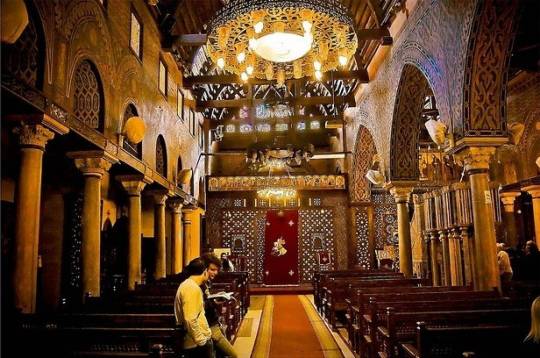
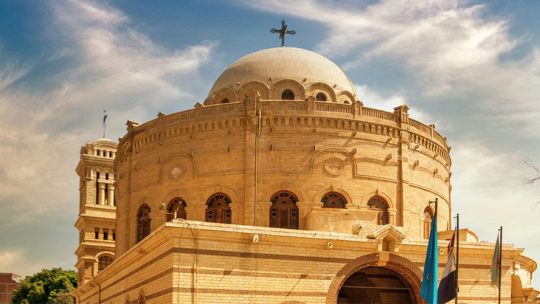


the siwa oasis!! i haven't been there myself and i'm literally never not salty about it😭 every time we try to plan a trip there something comes up </3


on the north coast, alex is by far the most visited city (for good reason) but in terms of beaches and resorts i prefer marsa matrouh it's less crowded, and the water is so clear it's insane


on the red sea sharm el sheikh is a mustttt visit destination, i went snorkeling there for the first time and got see the pretty coral reefs it's one of my favorite places everrrr in egypt <33

taba is also another place in sinai that looks freaking unreal but i haven't been there yet
i haven't been to upper egypt unfortunately but aside from visiting the famous temples in luxor and aswan i really want to see nubian architecture in person, it's so colorful and full of life
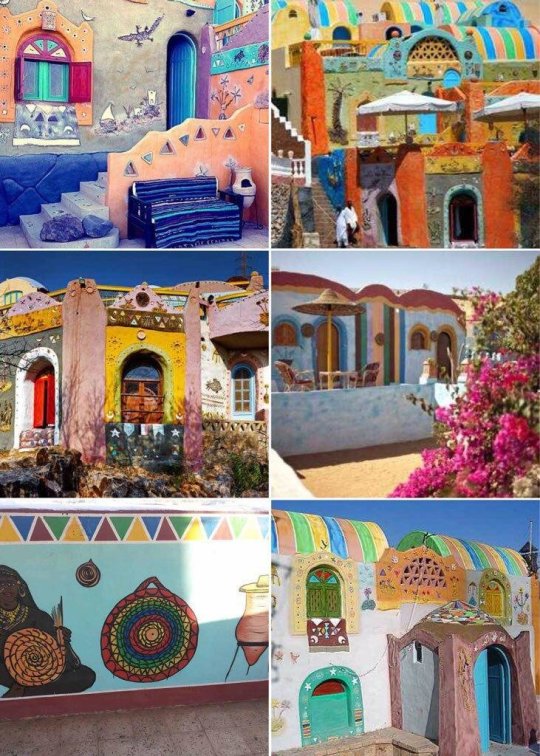
#*upper egypt is actually southern egypt btw the naming is ancient egyptian#inbox#there's so many places i didn't even mention like wadi el hitan and port said and al arish ugh
399 notes
·
View notes
Text
Why do people specify Roman Catholic?
Many people - even amongst Roman Catholics ourselves - may not be aware of this, but the Catholic church is actually made up of 24 sui iuris (autonomous) churches, all in communion with the Bishop of Rome. The dominant church is, clearly, the Latin or Roman Church, which makes up the vast majority of Catholics: the Eastern churches number only 18 million of the 1.3 billion Catholics in total.
The next largest is the Syro-Malabar church, centred in the Indian state of Kerala, and descending from a native church present in the region since around the 8th century. The next largest is the Ukrainian church.
The defining feature of these churches is that they use a different Rite than that of the Roman church: West and East Syriac, Armenian, Alexandrian, Byzantine.
The other main feature is a national one:
Under the Byzantine Rite, the most diverse, you have 14 churches: Albanian, Belarusian, Bulgarian, Croatian and Serbian, Greek, Hungarian, Italo-Albanian, Macedonian, Melkite, Romanian, Russian, Ruthenian, Slovak, and Ukrainian.
Under the Alexandrian rite, there are 3: Coptic, Ethiopian, and Eritrean.
Under the West Syriac rite, there are 3: Maronite, Syriac, Syro-Malankara.
Under the East Syriac rite, there are 2: Chaldean and Syro-Malabar.
Under the Latin rite, there is one: Roman (there are some other rites within the Roman church, such as the Ambrosian rite practiced in Milan).
Under the Armenian rite, there is one: Armenian.
All of these churches, though autonomous to a degree, are fully and entirely Catholic, fully united with the Roman Catholic Church.
Some are much older than others: the Maronite church, for example, has been extant since some time in the mid first millennium; while the Eritrean church was only formed in 2015.
152 notes
·
View notes
Text
Roughly 10 Cool Historical Queer Figures More People Should Know About
Part 1 - From Ancient Era to Early Modern Era
In spirit of Pride Month here's some snippets of queer history I think are interesting.
I've been working on a series of deep dives into interesting historical queer figures, but I haven't had the time to continue my list after the first entry about Julie d'Aubigny. I do want to continue with it, but I came to the realization that I will never have to time to do all the cool and interesting figures in depth, since there's too many, so I decided to do a list with brief descriptions about some of my favorite figures who are not that well known. Some of them are more well-known than others but I think they all deserve more acknowledgement.
I was able to trim down the number of figures to (roughly) 20, which was still too many for one post, so it's two posts now. They are in chronological order, so this part is set mostly before Victorian Era and the second part will be from Victorian Era onward.
This list is centered around western history (but not exclusively) because that's the history I'm most familiar with, though it's definitely not all white, since western history is not all white. I will be avoiding using modern labels, since they are rarely exactly applicable to history, rather I will present whatever we know about these figures' gender, sexuality and relationships. If there's information about what language they used about themselves, I will use that. Often we don't know their own thoughts, so I will need to do some educated guess work, but I will lean towards ambiguity whenever evidence is particularly unclear. If you are the type of person who gets angry with the mere suggestion there's a possibility that a historical gnc person might not have been cis, I encourage you to read my answers to related asks (here and here) first before sending me another identical ask. Try to at least bring some new arguments if you decide to waste my time with your trans erasure.
1. Khnumhotep and Niankhkhnum (latter half of 2400 BCE)

Khnumhotep and Niankhkhnum were ancient Egyptian royal servants, and possibly the first recorded gay couple in history known by name. They shared the title of Overseer of the Manicurists in the Palace of King Nyuserre Ini. They both had a wife and children, but they (along with their families) were buried together in a tomb. The tomb decorations show them similarly as other afterlife couples.
2. Marinos the Monk (c. 5th-8th century)
Marinos the Monk was born as Marina somewhere in eastern parts of Byzantine Empire, likely in the Levant. He was from a wealthy Christian family, possibly Coptic. Assigned female at birth his widowed father planned to marry him off and go to a monastery himself, but he convinced his father to take him with him dressed as a boy named Marinos. His father agreed and they were accepted as monks. After his father died many years later, he continued his life as a male presenting monk. Later he was accused of fathering an illegitimate child with a daughter of an innkeeper, which was not possible, but he didn't revoke the accusations, instead he begged for the abbot's forgiveness for "his sins". Marinos was banished from the monastery and became a beggar. For 10 years he raised his alleged illegitimate child as a father, until he was allowed to return to the monastery and do penance. Only after his death the abbot and the monks discovered his genitals and his inability to father children and were distraught for punishing an innocent man for 10 long years. The real father was discovered and along with the innkeeper and his daughter they all came to honor Marinos' grave and ask his forgiveness. He was canonized as a saint for his sacrificial selflessness, modesty and humility and honored across the Mediterranean from Ethiopia to France.
3. Mubārak and Muẓaffar al-Saqlabi (c. 10th - 11th century)
Mubārak and Muẓaffar were co-rulers of Taifa of Valencia in Muslim Spain. Al-Saqlabi means literally "of the Slavs", which in Al-Andalus was a general term for enslaved northern Europeans, as the two had been enslaved as children. They were in the service of another al-Saqlabi, a chief of police, and they worked they way up as civil servants till a local military coup in 1010, which resulted in them becoming the emirs of Taifa of Valencia. English language sources often describe them as "brothers" and "eunuchs", which gives the "historical gal pals" trope a concerning twist, but contemporary Muslim sources wrote fawningly about their passionate love, trust based on equality and mutual devotion. There was a popular genre of homoerotic poetry in the Islamic world at the time and poems in that genre were written about celebrating Mubārak and Muẓaffar's relationship. In 1018 Mubārak was killed in a riding accident and Muẓaffar shortly after in an uprising.
4. Eleno de Céspedes (1545 – died after 1589)
CW: genital inspection
Eleno was born in Andalusia, Spain, to an enslaved black Muslim woman and to a free Castillian peasant. He was assigned female at birth, given name Elena, and branded as a mulatto born to a slave. She was freed as a child and married to a stonemason at 15-16 years old. When pregnant, her husband left her and died a while later. Later Eleno testified that his intersex condition became externally visible, while he gave birth, and he became a man. He left his son to be raised by a friend and traveled around Spain. After he stabbed a pimp and ended up in jail, he started presenting as a man and openly courting women. Eventually he taught himself to be a surgeon with the help of a surgeon friend.
When he married María del Caño, his maleness was questioned and he was subjected to genital inspection multiple times and it was agreed by doctors that he had definitely male genitals, possibly also female genitals. After a year of marriage the couple was accused of sodomy. Eleno was tried by the Spanish Inquisition and subjected to more genital inspections, during which no penis was found. He claimed that his penis had been amputated after an injury. He defended himself in the trial by arguing that his intersex condition was natural and he had become a man after his pregnancy, so his marriage was legal. He was sentenced only for bigamy, since he had not confirmed that his husband was dead and punished as a male bigamist with 200 lashes and 10 years of public service to care for the poor in a public hospital. His fame attracted a lot of people wanting to be healed by him, which which was very embarrasing for the hospital so he was sent away and eventually exonerated from his charges.
7. Chevaliére d'Éon (1728-1810)

Charles d'Éon de Beaumont was born to a poor French noble family. In their 20s they became a government official and at 28 they joined the secret spy network of the king, Secret du Roi. They became a diplomat first in Russia and later in Britain while they used their position to spy for the king. Rumors circulated in London that they were secretly a woman. While in London they had a falling out with the French ambassador, accused him of attempted murder and published secret diplomatic correspondence. They were instead accused of libel and went into hiding. After the death of Louis XV in 1774 and the abolishment of Secret du Roi, d'Éon negotiated with the French government of the end of their exile in exchange for the rest of the secret documents he possessed. D'Éon took the name Charlotte, claimed she was in fact a cis woman - she had pretended to be man since a child so she could get the inheritance - and demanded the government to recognize her as such. When the king agreed and included funds for women's wardrobe, she agreed and returned to France in 1777. After that she helped rebels in the American War of Indepence - was not allowed to ]go and fight too, ghostwrote her not super reliable memoir, offered to lead a division of female soldiers against the Hasburgs in 1792 - was for some reason denied, attended fencing tournaments till 65 years old and settled down for the rest of her years with a widow, Mrs. Cole. After her death a surgeon reported that she had male primary sex characteristics, but fairly feminine secondary sex characteristics, like round breasts, which might suggest she had hormonal difference/was intersex in some way.
8. Public Universal Friend (1752-1819)
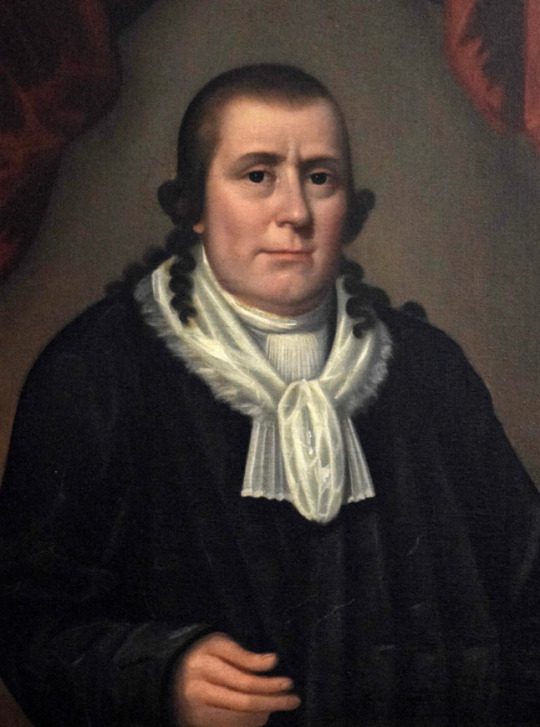
Public Universal Friend, or The Friend or PUF, was born as Jemima Wilkinson to Quaker parents in Rhodes Island, USA. Jemima contracted a disease in 1776, gained intense fever and almost died. The Friend claimed that she did die and God sent the Friend to occupy her body. The Friend didn't identify as man or a woman, and when asked about the Friend's gender, the Friend said "I am that I am". The Friend didn't want any gendered pronouns or gendered language to be used about the Friend. The Friend's pronouns, according to the writings of the Friend's followers, were "the Friend", "PUF" and possibly he. First recorded neo-pronouns perhaps? The Friend also dressed in androgynous/masculine manner.
The Friend started a bit cultish religious society disavowed by mainstream Quakers, The Society of Universal Friends, which I can only describe as chaotic good. The Friend first predicted a Day of Judgement would come in 1780 and when 1780 came and went, the Friend decided it was New England's Dark Day in 1780 and they had survived survived the Judgement Day so all was good then. The Friend preached for gender equality, free will, universal salvation (Jesus saved everyone and no one will go to hell) and abolition of slavery. The Friend persuaded any followers to free their slaves, which is probably the most chaotic good thing a potential cult leader can do with their influence over their followers, and several freed black people followed the Friend too. The Friend advocated for celibacy and was unfavorable towards marriage, but didn't think celibacy or rejection of marriage were necessary for everyone else, so it feels more like a personal preference. Many young unmarried women followed the Friend and some of them formed Faithful Sisterhood and took leadership positions among the Society.
The Society of Universal Friends tried to form a town for themselves around mid-1780s, till in 1799 the Friend was accused of blasphemy. The Friend successfully escaped the law two times. First the Friend, a skilled rider (what's a gender neutral version of horse girl?), escaped with a horse, then after an officer and an assistant tried to arrest the Friend at home, women of the house drove the men away. Third time 30 men surrounded the Friend's home at night, but a doctor convinced them that the Friend was in too poor health to move but would agree to appear at court. The Friend was cleared for all charges and even allowed to preach at the court.
9. Mary Jones (early 1800s–1853)
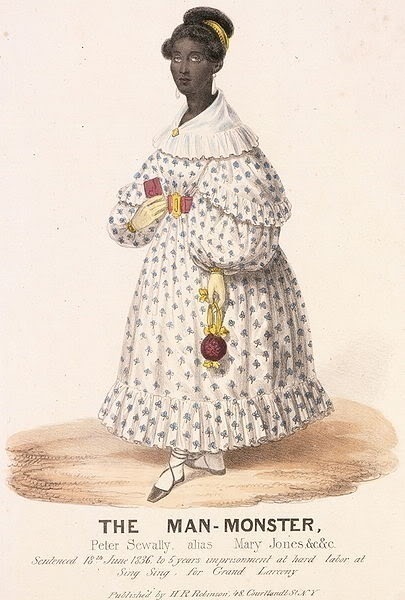
Mary Jones' origin is unknown, but she was an adult in 1836 in New York, USA. She was a free Black person, who preferred to present as a woman. She was sex worker by trade and used a prosthetic vagina. As a side hustle she would steel her customer's wallets, and usually they wouldn't tell anyone because it was 1830s and inter-racial sex and prostitution were illegal and everyone was repressed. Smart. Get your coin, girl. However after one of her more shameless customers discovered his wallet with 99 dollars inside had been replaced with a different man's empty wallet and contacted the police, she was arrested. The police discovered she had male genitals and when they searched her room they found several more stolen wallets. She appeared in court in her female presentation and when asked about her dress, she said that prostitutes she had worked with encouraged her to dress in women's clothing and said she looked better in them. They were right and she had since presented as a woman in her evening profession and among other Black people. She was convicted for grand larceny and sentenced to 5 years in prison. Later she continued to present as a woman and practice sex work, for which she was arrested for two more times.
10. George Sand (1804-1876)
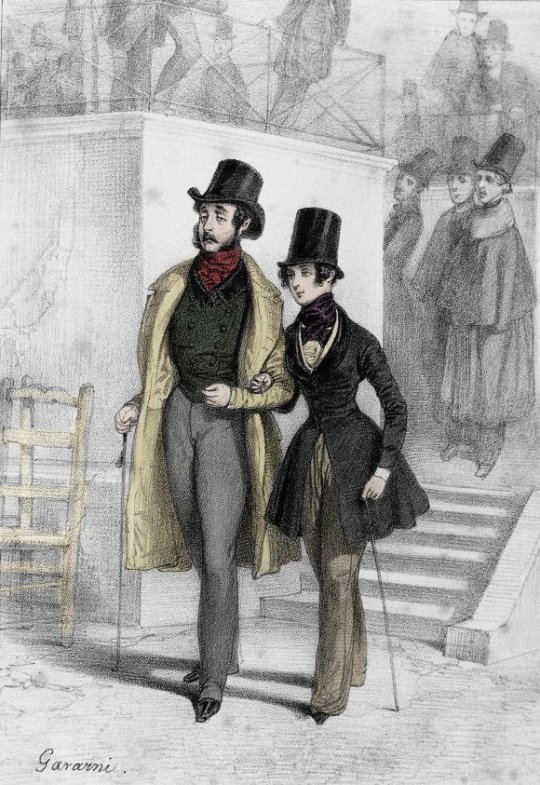
George Sand was pen name of Amantine Lucile Aurore Dupin de Francueil, a French Romantic writer. Amantine was high-born with a countess as a grandmother. George wrote about themself with alternating masculine and feminine language, using feminine language when talking about his childhood, but masculine language often other times. Their friends also used both masculine and feminine terms about them. Victor Hugo for example said about them: "George Sand cannot determine whether she is male or female. I entertain a high regard for all my colleagues, but it is not my place to decide whether she is my sister or my brother." George preferred men's clothing in public, which was illegal for those seen as women without a permit, but they didn't ask for permissions. They alternated between masculine and feminine presentations. They were outspoken feminist, critic of the institution of marriage, committed republican and supporter of worker's rights. They were married at age 18, had two children and left their husband in 1831, but legally separated from him in 1835. They had many affairs with men and some with women, at least with actress Marie Dorval. Their most notable relationship was with Frédéric Chopin, but they fell out before Chopin's death.
#i will be absolutely writing in depth posts about some of these figures#the friend is 100% one of those i fucking love the friend that story is a gift that keeps giving#history#queer history#pride month#queer#lgbtq history#queer tag#trans history#gay history#sapphic history#lesbian history#intersex history
227 notes
·
View notes
Text
Just leaving this here.
Feel free to reblog.
#dougie rambles#political crap#middle east#Asia#africa#north africa#Egypt#coptic#languages#language revival#language#language revitalization#endangered languages#threatened languages#Coptic language#Coptic people#news#everything is in the news today#reblog this#please reblog this#reblog the shit out of this
7 notes
·
View notes
Text
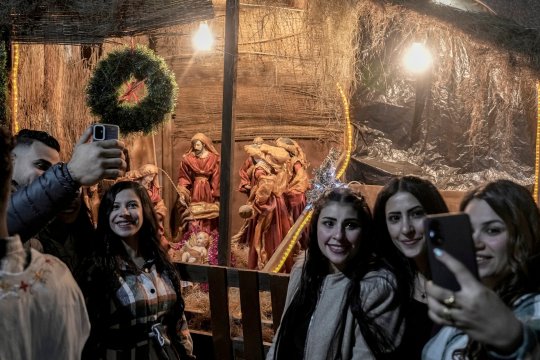
Coptic Christians pose for selfies in front of a Nativity display at the Church of Ava Bishoy and St. Karas the Anchorite in Cairo, Egypt, late Saturday, Jan. 6, 2024. Coptic Christians observe Christmas on Jan. 7, according to the old Julian calendar. (AP Photo/Amr Nabil)
#religion#christianity#orthodoxy#coptic orthodox#christians#people#nativity#christmas#egypt#divinum-pacis
17 notes
·
View notes
Text
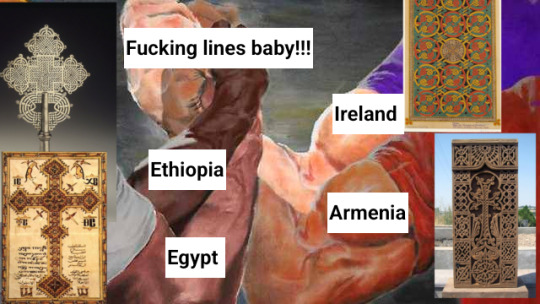
Tasteful bitches love doing knotwork. There's a lot more knot appreciators but I don't know if I can fit them all in a meme
#cipher talk#I have seen people claim Coptic knots and Celtic knots are related but I don't know if that's Egyptian arrogance striking again#Other knot appreciators: takfeet designs in Syria and Egypt. China. Nigeria. Mongolia. Korea.
38 notes
·
View notes
Text

the Nine Saints
ethiopia, c. 15-16 centuries
a group of nine missionaries from various regions of the Byzantine Empire, who came to Ethiopia during the Council of Chalcedon 451, a very divisive and complicated period of the Early Church’s history, played a pivotal role in bringing Christian faith into the land as the primary faith.
‘Chronicle of Axum’ stated about all saints that: ‘in the days of Amiamid, many monks came from Rum, who fill’d all the Empire; Nine of them stay’d in Tigre, and each of them erected a Church of his own Name’.
not much is present about their hagiographies, at least in english, so all that i could acquire on them shall be presented below. only eight are depicted on the icon.


abba Pantelewon
abba Garima
abba Liquanos
abba Aftse
abba Aragawi
either abba Yem’ata or abba Alef
abba Guba
abba Tsahma
1. abba Pantelewon
borne in a noble Byzantine family (470-522), he eventually became a monk, who is associated with the founding of Pantelewon monastery. in 480 AD he fled to Axum, the capital city of Ethiopia, among with other 8 saints, who were all, just as him, escaping the Chalcedonian Council 451 (declared Monophysitism a heresy). in another tradition, abba Pantelewon enclosed himself in a tower for 45 years, and this tower, later, was identified as Pantelewon Monastery near Axum. abba Pantelewon is also regarded as a skilled exorcist, considered to have casted out evil spirits and brought peace to turmoiled regions.
2. abba Garima (Isaac/Yeshaq)
his hagiography was written in around late 15th century. his father was king of Rum (Byzantium) and after his death, abba Garima was a king for 7 years - up until abba Pantelewon summoned him to be a monk. this way, abba Garima spent 5 years with abba Pantelewon, until he went on his own way and established a monastery at Mädära, where he spent about 20 years of his life. there, he became known as an exorcist and wonderworker. monastic tradition holds that the Garima gospels (three ancient ethiopic manuscripts containing all four Gospels and supplements like lists of Gospel chapters. Garima 2 is held as the earliest existing complete illuminated Christian manuscript) were composed by abba Garima himself.
3. abba Liquanos
is known as composer of hymns, prayers and liturgies, that are still used within the tradition of Ethiopic Orthodox Church. was probably from Constantinople, but later moved to Däbrä Qwänasel monastery.
4. abba Aftse
has a syriac name, so probably came from Edessa. according to his hagiography, he travelled from Asia Minor to Rome, where he met abba Garima. they travelled together to Ethiopia and he founded a monastery in Yeha as a center of learning and spiritual guidance. abba Aftse is known as a healer.
5. abba Aragawi
was a disciple of Coptic monk Pachomius the Great (a founder of Cenobitic monasticism). after twelve years at the court of king Ella Amida of Axum, he and the nun Edna, his friend, travelled to found Debre Damo monastery. as the legend states, when he was at the base of the mountain, on the top of which Debre Damo is located, a large green serpent slithered to him, and st Michael the archangel appeared, giving abba Aragawi instructions on how to build the monastery. after that, the serpent coiled itself around the monk and aided in travelling up the mountain to do the angel’s bidding.
6. abba Yemata OR Alef
abba Yemata: a charismatic preacher, who travelled far and wide preaching the Gospel and founding churches in distant areas. currently has a church of Abuna Yemata Guh dedicated to him.
abba Alef: travelled north and reached Bi’isa, founded a monastery there (Gär’alta, Endärta woreda, Tigray region) and was a missionary to the local people.
7. abba Guba
probably coming from Cilicia, he was a fellow monk of abba Pantelewon. after that, he moved to the desert of Bäräka. he is known as a healer, who established a monastery in Madara for medical needs and spiritual comfort of the community.
8. abba Tsahma
originally coming from, possibly, Antioch, he moved to Ethiopia and, establishing the monastery there, this devout scholar devoted his life to studying the Scriptures and evangelising, educating people on Christian faith.





sources:
The Nine Saints
The Legend of Saint Abuna Aragawi Monastery
Aleteia.org
Dictionary of African Christian Biography
#christian faith#christianity#icons#iconography#africa#ethiopia#african saints#saint#saints#ethiopian saints#aesthetics#art#religious art#orthodox#orthodoxy#catholic#catholicism
48 notes
·
View notes
Text
Bat Family is Multilingual
While that seems like an obvious observation, not enough people talk about it, either on this site on anywhere else. But yeah, the Bats are a polyglot household. And for those that grew up speaking more than one language, we all know the mayhem that brings.
You know the "spanglish" and "portenglish" that we create? It's on another level at the Wayne residence. Conversations switch languages every sentence, for their dialect of gibberish to anyone outside of it.
For example, the conversation goes: English -> Spanish -> Swahili -> Aramaic -> Mandarin -> Portuguese -> Patuá (Macanese Patois) -> Romani -> Navajo -> Kryptonian -> Coptic -> Arabic -> Doric Greek (Greek from Sparta) -> Griko (Greek dialect in Italy) -> Cherokee -> Vietnamese -> Nahuatl -> Hebrew -> Back to English
Also, they switch languages depending on what they're cooking and proceed to shout it across the kitchen. The loudest The Latin ones and Arabic.
Even sign language is multilingual. The family has their version of it (created by Cass, which uses more body language and movements that show things and feelings instead of words), but they switch between American, British, French, New Zealand, Irish, Brazilian, Maritime, Hong Kong, Inuit, Ka'apor, and even Plains Indian SL on the daily basis. It's so varied that for an outsider, it just looks like their gesturing half the time.
And honestly, I think it all started with an angry Bruce learning French and German from Alfred.
#batman#batfamily#bruce wayne#dc comics#stephanie brown#cassandra cain#jason todd#dick grayson#tim drake#batfamily fluff#polyglot#duke thomas#damian wayne#alfred pennyworth#the whole family is completely insane#I swear#I think they just grunt to each other during inter-superhero meetings just to fuck with them
441 notes
·
View notes
Text
The next part of my pollfic! You guys got me with a tie last time. I tried my best!
Previous.
(Edited to actually put the poll in, sorry about that.)
.
For a moment, Danny was paralyzed by indecision. Who should he go to? Who should he help? But then he remembered that this wasn’t a combat situation. He could help both, one at a time.
There were, perhaps, some negative side effects from spending his formative years as a ghost as a superhero and satisfying his Obsession through combat. It was very unfortunate. Useful in combat! Less so at other times.
But he should ask the large man first, or else by the time he finished translating for the attendant he might be done. He inched closer, hovering so he could actually see what the man had spread out on his table.
His heart sank when he saw clay tablets and papyrus scrolls covered with the tiny, black squiggles of Coptic.
Danny knew a fair amount of Akkadian cuneiform. While Pandora tended to focus on the immediately and practically applicable when it came to language lessons, Clockwork had a more chronological method. As in, he seemed intent on teaching Danny languages in the order of when they were first written down, except for when a certain language was necessary for one of the time field trips he sometimes sent Danny on.
(He had not, perhaps, revealed the extent of those trips to his parents. A story for another time.)
Coptic was, sadly, not among those.
Still. He was a bit more concerned about the expressions of abject suffering the man was making.
“Um, excuse me? Sir? Are you alright?” asked Danny. He bobbed in the air, near the man’s shoulder. “Do you need help?”
The man looked up in clear surprise, eyes flicking over Danny from head to toe. Not that there was a whole lot of Danny to look over right now. “Ah,” he said, “I am afraid I have reached beyond my grasp, but unless you have the Coptic and the language of Blessed Sargon both, it is not to be.”
“I know some Akkadian. I could translate it into English and then you can put it into Coptic?” suggested Danny.
“Alas, I am going the other way,” said the man, pulling slightly on his curly beard. “The Coptic, into mine own language, yes?”
“Oh,” said Danny, deflating further. “Okay. Sorry. You just looked, um…”
“Wait,” said Dad. “He’s from ancient Sumeria? Ask him what that was like! He’s got to know so much stuff!”
Danny was not going to ask him that. That would be rude, considering how hard he was working, and edged just a little too close to asking a stranger about their death for Danny’s peace of mind.
“That is very dear of you, to come see,” said the large man. “Perhaps after this, our paths cross again, hm?”
“Maybe,” said Danny. “Sorry for interrupting you.”
The man waved him off, already refocusing on his tablets. Danny gathered up his things and hurried to the attendant’s desk only to discover that she had been watching him. But for how long?
“Hi!” he said, a little nervous from the pressing need of his Obsession. “I finished this translation, and I was wondering if I could help you out with the others you mentioned? Or other Elysian ones?”
The attendant stared at him for a long moment, and Danny got the distinct and vaguely embarrassing sense that his Obsession had been correctly clocked.
Then her face scrunched up into the expression people made when they had seen something indescribably cute. Ugh.
“Oh my goodness,” she said, “that’s so lovely and sweet of you to offer! Like I said, we have a pretty big backlog, so any help you can give us there is greatly appreciated. But… if you don’t mind doing something that isn’t strictly translation, there’s something else you can help us with that needs Elysian Greek. Among other things.”“Er, Danno,” said Dad, “why are we doing this? I thought you just wanted to give us a look around the library?”
#danny phantom#dannymay#dannymay 2024#dannymay day 15: field trip#kingdom of fish#choose your own adventure#pollfic#poll fic
54 notes
·
View notes
Text
At long last, it is Post Stuff I Made Time again. The last time I had a book to show off was in May and that's just too long. Not a fic (this time. I have them, they're coming) but a journal:

I made this as a dnd journal for my husband, and it was originally supposed to be a Christmas present, then a birthday present (in March), and finally it has reached its true potential as a Labor Day Week present. But it's gorgeous, he loves it and I'm proud of it. The cover is Allure book cloth (the color's called skylight), with the strip at the bottom in chiyogami (from ChibiJay; I got it in one of their assorted strip packs), and the flower is gold foil htv. The campaign is pirate/high seas themed, and his character's background has a distinct Fantasy Japan element, so a lot of the design choices followed from that.
More photos under the cut!

Close up on the cover. I thought I had a close up of the flower icon but I must not have taken it. Love how close the color match is between the blue in the waves and the book cloth. The gold htv came out a bit less smooth than I'd have liked, but it has a kind of gold leaf look to it that we both ended up really liking.


He requested a Coptic bind so it would lay flat when opened, and I did Coptic end bands for stability and because they look cool, especially with the exposed link stitches. I find the link stitches also add a bit of stability when you've got fewer Coptic stitches. I special ordered the pink thread (again, his choice) from Hollander's, and it was expensive and totally not worth the hassle. The only way to get this color was pre-waxed and there is SO MUCH WAX on it, it's ludicrous. I scraped a lot of it off on a blade and it was still too waxy, like handling a candle. It's also very stiff and thicker than I'm used to, to the extent that it was hard to thread the needle with it. I've ordered their unwaxed thread before and would do it again, but this is the last time I buy the waxed stuff. Embroidery floss is cheaper, easier to work with, and comes in more colors.


Please ignore the blurriness in the second photo; I have never claimed to be a photographer and didn't notice it till now. This is the doublure on the inside of the front cover, and it's more chiyogami from Chibijay. The wave pattern wraps around from the front to finish up under this paste-down; I wanted to do the same in the back but didn't have enough of the wave print, so the back is plain.
I thought I'd taken a photo of the pages but I guess I didn't because I can't find it now. Being a journal there was no typeset for this. I actually bought a pre-cut and pre-folded unsewn book block from Hollander's for this. They come in a couple of colors and you can get them blank, with lines, or with graph print for drawing, and Husband chose the graph paper for ease of drawing and making charts.
As a rule I don't normally make journals; books only become interesting to me after there is something in them. So I just skipped the part of the "learning to make books" process where most people make a bunch of sketchbooks. This is actually the first one I've ever made. I'm pleased with how it turned out, and Husband loves it, but I can't see them becoming a regular part of my output unless it's requests like this. However, I've got six finished fic binds to post, so stay tuned for those.
#bookbinding#snek makes books#what else should i tag this#it's not a fanbinding it doesn't have a fandom#this isn't enough tags
47 notes
·
View notes
Text

Locs have a long history in Africa. Victoria Sherrow, the author of the Encyclopedia of Hair, A Cultural History 1, nàmed the priests of the Ethiopian Coptic Orthodox Church as some of the first people to have sported locs in Africa, as early as 500 BCE.
In certain spiritual and religious practices,locs can symbolize devotion, spirituality, and a commitment to a particular way of life. For example, in Rastafarianism, locs are considered a sacred hairstyle associated with the Nazarites and the covenant with Gòd.
Guys let's get our YouTube channel (YT: Historical Africa) to 200k subscribers. Kindly click on the link to subscribe. 🙏 https://youtube.com/c/HistoricalAfrica
111 notes
·
View notes